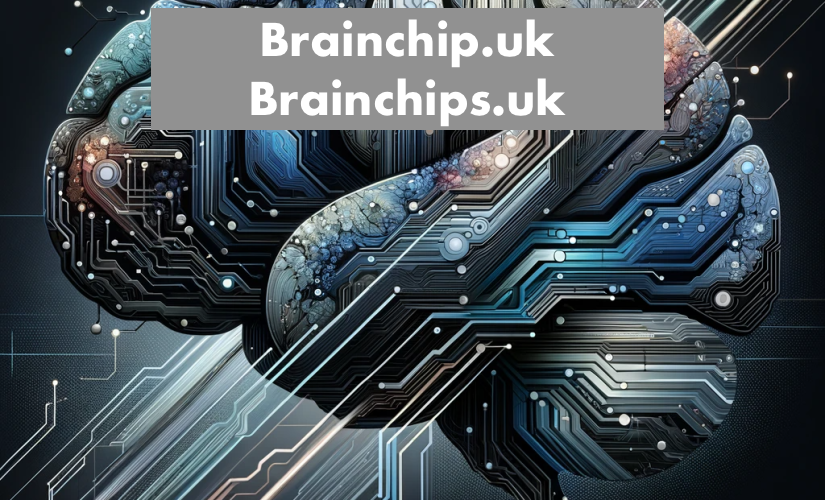
Embarking on a Journey Through Time: Exploring the Depths of Episodic Memory
The concept of time travel has long captured the imagination of humanity, from the futuristic time machines of H.G. Wells to the iconic DeLorean in “Back to the Future,” the idea of traversing through the annals of history has fueled countless narratives and dreams. But what if time travel were more than just a figment of our imagination? What if we could truly delve into the past, reliving moments etched in the tapestry of time?
While the notion of physically journeying through time remains firmly in the realm of fiction, the human mind possesses its own form of time travel: episodic memory. Episodic memory is a unique facet of human cognition, allowing us to mentally transport ourselves back to specific moments in our past, rekindling emotions, sensations, and experiences long since passed. In essence, it serves as our personal time machine, enabling us to revisit cherished memories or learn from past mistakes.
Imagine, for a moment, the ability to relive your fondest childhood memories with the clarity and vividness of the present moment. Episodic memory grants us this extraordinary capability, offering a window into our personal history that is as immersive as it is introspective. Whether it’s recalling the exhilaration of your first bicycle ride or the warmth of a family gathering, these memories not only shape our sense of self but also provide a sense of continuity amidst the ceaseless march of time.
However, like any journey through time, the realm of episodic memory is not without its complexities and intricacies. Memories are not static entities but rather dynamic constructs that are subject to the vagaries of perception, interpretation, and time itself. As such, our recollections may undergo subtle alterations with each act of retrieval, influenced by our present emotions, biases, and perspectives.
Moreover, the human mind is not impervious to the passage of time, and as the years unfold, memories may fade, become fragmented, or be altogether lost to the recesses of our consciousness. Yet, even in the face of such impermanence, episodic memory endures as a testament to the richness of the human experience, preserving moments both trivial and profound within the recesses of our minds.
But what if we could transcend the confines of our individual memories and venture beyond the boundaries of our own lives? What if we could bear witness to pivotal moments in history or gain insights into the lives of our ancestors? While the prospect of such temporal exploration remains the stuff of dreams, the power of episodic memory offers a glimpse into the past that is uniquely our own.
In essence, the journey through episodic memory is a deeply personal and profoundly human experience. It is a voyage through the labyrinthine corridors of our minds, where each memory serves as a waypoint along the continuum of our lives. Whether we choose to revisit moments of joy, confront the ghosts of our past, or simply revel in the tapestry of human experience, episodic memory invites us to embark on a journey through time unlike any other.
So, as we contemplate the mysteries of the past and the possibilities of the future, let us not forget the extraordinary gift that resides within each of us: the ability to travel through time, not through the machinations of science or technology, but through the boundless expanse of our own consciousness. For in the realm of episodic memory, the past is not merely a distant echo but a living, breathing testament to the beauty and complexity of the human experience.
What is Episodic Memory
Episodic memory is a type of long-term memory that involves the recollection of specific events, situations, and experiences in one’s life. It allows individuals to remember past personal experiences in vivid detail, including the time, place, people involved, emotions felt, and other contextual details. Episodic memory is often contrasted with semantic memory, which involves the recall of general facts and knowledge not tied to a specific event or context.
Key features of episodic memory include:
- Temporal Context: Episodic memories are associated with a specific time and place. Individuals can often recall when and where an event occurred, providing a temporal context for the memory.
- Subjective Experience: Episodic memories are characterized by the individual’s subjective experience of the event. This includes the emotions, thoughts, and sensations experienced at the time of the event.
- Autobiographical Nature: Episodic memories are typically autobiographical in nature, relating to events that happened to the individual personally. These memories contribute to one’s sense of self and personal identity.
- Rich Detail: Episodic memories often contain rich and detailed information about the event, including sensory perceptions (such as sights, sounds, smells) and other contextual details.
- Recollection and Retrieval: Episodic memories can be consciously recalled and retrieved when needed. However, the accuracy and completeness of recall may vary over time and can be influenced by various factors such as emotion, context, and cognitive processes.
Episodic memory plays a crucial role in various cognitive functions, including learning, decision-making, and future planning. By drawing on past experiences, individuals can make informed choices, anticipate future events, and navigate their environment more effectively. Additionally, episodic memory contributes to the richness of human experience, allowing individuals to reminisce about significant life events and maintain connections with their past selves and others.
Neuroscientific research suggests that the hippocampus, a brain structure located in the medial temporal lobe, plays a central role in the formation and retrieval of episodic memories. Other brain regions, including the prefrontal cortex and medial temporal lobe structures like the amygdala and entorhinal cortex, also contribute to various aspects of episodic memory processing.
Overall, episodic memory is a fundamental aspect of human cognition, enabling individuals to mentally travel back in time and re-experience the moments that shape their lives. It provides a unique window into the past, fostering self-reflection, emotional connection, and a deeper understanding of one’s own life story.
Unveiling the Future of Brain Mapping and Memory Recall: Revolutionizing Healthcare with Brain Chips
In the evolving world of neuroscience and medical technology, the exploration of the human brain continues to unveil groundbreaking discoveries and innovations. Among the most promising advancements on the horizon are brain mapping and brain chips—technological marvels poised to revolutionize the way we understand and interact with the complex workings of the mind. As researchers delve deeper into the intricacies of brain function, the potential for enhancing memory recall and aiding individuals with conditions such as dementia and brain injury has never been more promising.
Brain mapping, the process of comprehensively charting the structure and activity of the brain, has emerged as a powerful tool in unraveling the mysteries of cognition and memory. Through techniques such as functional magnetic resonance imaging (fMRI), electroencephalography (EEG), and diffusion tensor imaging (DTI), scientists can visualize neural networks, track information processing, and pinpoint regions responsible for various cognitive functions.
In tandem with brain mapping, the development of brain chips—implantable devices designed to interface directly with the brain—promises to unlock new frontiers in memory recall and cognitive enhancement. These chips, often referred to as neural implants or neuroprosthetics, have the potential to restore lost functions, augment cognitive abilities, and even facilitate communication between the brain and external devices.
One of the most tantalizing prospects of brain chips lies in their ability to enhance memory recall. By directly interfacing with neural circuits associated with memory formation and retrieval, these implants could offer individuals unprecedented control over their recollection abilities. Imagine being able to effortlessly access and replay cherished memories with the clarity and detail of the original experience, or to bolster cognitive function by augmenting working memory capacity.
For individuals struggling with conditions such as dementia or traumatic brain injury (TBI), the potential benefits of memory-enhancing brain chips are particularly profound. Dementia, characterized by progressive memory loss and cognitive decline, robs individuals of their most cherished memories and robs them of their ability to navigate daily life. Similarly, TBI can result in cognitive impairments and memory deficits that profoundly impact an individual’s quality of life.
Brain chips offer a glimmer of hope for these individuals, providing a means to store and back up memories, essentially creating a digital repository of one’s life experiences. By encoding memories onto neural implants, individuals could preserve precious moments and safeguard them against the ravages of neurodegenerative diseases or traumatic injury. Moreover, the ability to selectively retrieve and reinforce memories could facilitate cognitive rehabilitation and improve overall brain function.
In addition to memory recall, brain chips hold promise for a myriad of other applications in healthcare and beyond. From restoring motor function in individuals with paralysis to treating psychiatric disorders such as depression and anxiety, these implants represent a transformative leap forward in our quest to unlock the full potential of the human brain.
Of course, the development and widespread adoption of brain chips are not without challenges and ethical considerations. Concerns regarding privacy, consent, and the potential for misuse must be carefully addressed to ensure the responsible and equitable deployment of these technologies. Moreover, rigorous research and clinical trials are needed to validate the safety, efficacy, and long-term effects of neural implants in diverse populations.
As we stand on the cusp of a new era in neuroscience and neurotechnology, the future of brain mapping and memory recall holds immense promise for individuals worldwide. Through innovative approaches and interdisciplinary collaboration, we have the opportunity to harness the power of the brain to improve health, enhance cognition, and transform lives in ways once thought impossible. With each new discovery and technological breakthrough, we inch closer to realizing the full potential of the most complex organ in the human body—the remarkable human brain.
Conclusion
The ability to recall memories stands as a cornerstone of human experience, shaping our identity, guiding our decisions, and enriching our lives with past experiences. Whether through the intricate workings of our own minds or the potential promise of emerging technologies such as brain chips, the journey of memory recall is one imbued with profound significance and endless possibility.
As we navigate the complexities of memory, from the fleeting recollections of everyday life to the deeply ingrained narratives that define us, it becomes evident that our ability to remember is not merely a passive process but an active and dynamic engagement with the past. Each memory we cherish, each moment we relive, serves as a testament to the resilience of the human spirit and the enduring power of the mind to transcend the boundaries of time and space.
Looking ahead, as we continue to unravel the mysteries of memory and cognition, let us not only strive to unlock the secrets of the human brain but also to harness this knowledge for the betterment of humanity. Whether it be through innovative therapies for neurological disorders, advancements in cognitive enhancement, or the preservation of cherished memories for generations to come, the future of memory recall holds the promise of healing, discovery, and transformation.
Ultimately, in the intricate dance between past, present, and future, the ability to recall memories serves as a guiding light, illuminating the path forward with the wisdom and insight gleaned from our shared journey through time. As we embrace the gift of memory, let us cherish each moment, treasure each recollection, and celebrate the enduring legacy of the human experience. For in the labyrinth of memory, we discover not only who we are but also the boundless potential of what we may yet become.
Further Reading:
- Want to travel back in time? Use episodic memory – Harvard Health
- Memory Recall and Retrieval System | Types, Processes, Improvement & Problems (human-memory.net)
- The recall of information from working memory: insights from behavioural and chronometric perspectives – PMC (nih.gov)
- The neurobiological foundation of memory retrieval – PMC (nih.gov)
- Somatotopic Mapping of the Fingers in the Somatosensory Cortex Using Functional Magnetic Resonance Imaging: A Review of Literature – PMC (nih.gov)
#brainchips #brainmapping #somatotopicmapping #memory #memoryloss #dementia #memoryrecall #cognition #episodicmemory #braininjury #tbi #traumaticbraininjury #episodicmemory













